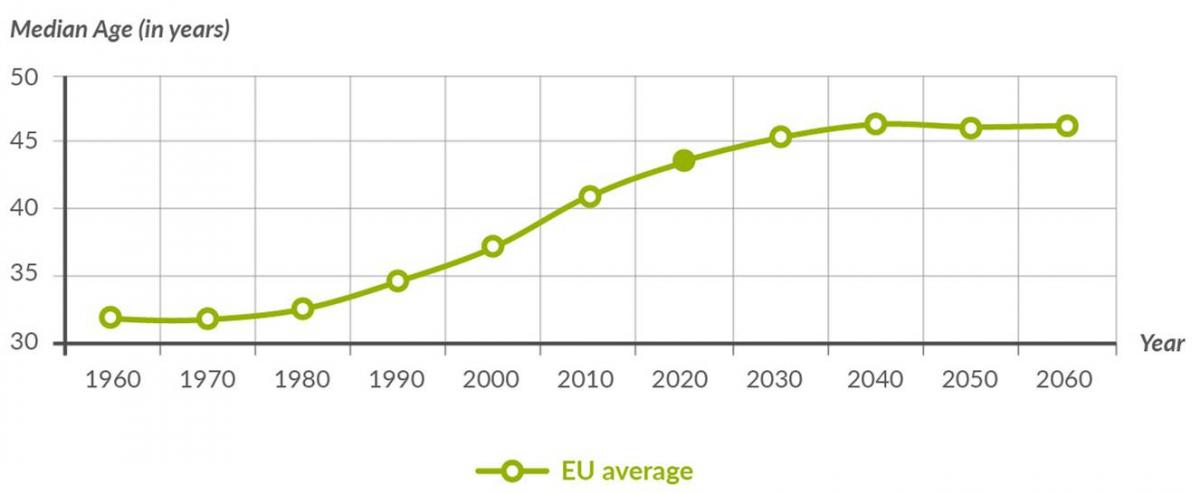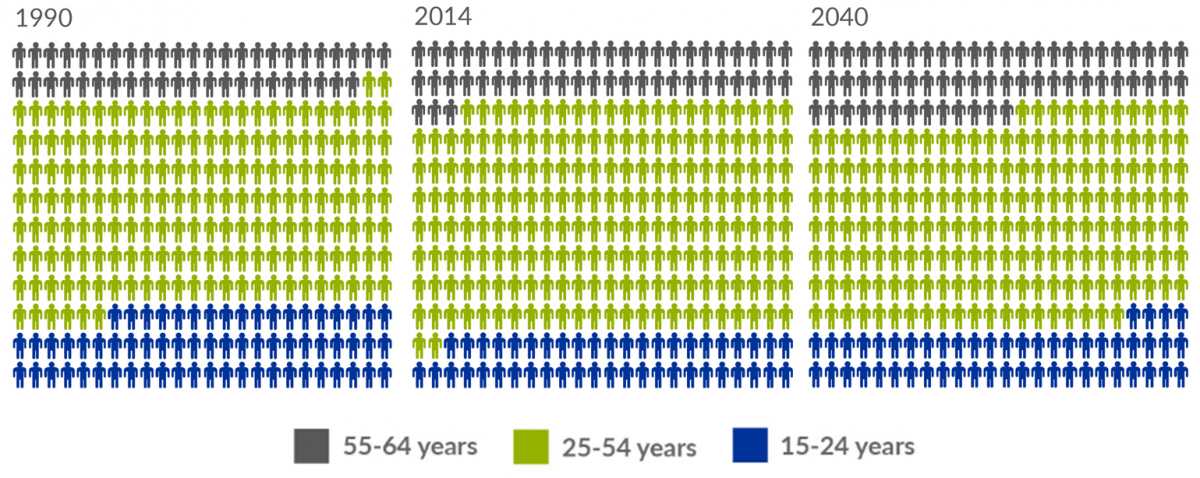Why is ageing relevant for occupational safety and health?
Ageing of the population in Europe
The population across the EU has been ageing significantly over recent decades: a trend that is set to continue and intensify. The following graph shows that the median age has increased significantly over recent decades and is projected to continue rising.
Median age: EU average between 1960 and 2060

The ageing of the population goes hand-in-hand with the ageing of the workforce. Fewer young people are entering the labour market, while the proportion of older people (aged 55-64 years) in the workforce is growing.
Age composition of the working population (1990-2060)

New challenges for occupational safety and health
The ageing of the workforce creates new challenges for safety and health at work:
- People will have to work longer, which potentially means longer exposure to workplace hazards. This is a risk factor for many work-related health problems (e.g. musculoskeletal disorders) and occupational diseases.
- With people having to work longer, chronic health problems (e.g. cardiovascular diseases, hypertension, chronic respiratory conditions and diabetes) will be more prevalent within the workforce (read more).
The ageing workforce and the changing world of work
Technology and globalisation have significantly changed the way people work and the types of risks that occur at the workplace. The number of people carrying out sedentary work is rising, and prolonged sitting and inactivity increase the risk for many health problems, such as musculoskeletal disorders, cardiovascular diseases and some types of cancer. Moreover, psychosocial risks are more prevalent. These changes, in combination with the ageing of the workforce, create additional challenges for safety and health at work.
Occupational safety and health management
Good occupational safety and health management throughout the working life, including risk prevention on the one hand, and workplace adaptations to match changing functional capacities on the other, is crucial to address the abovementioned challenges. Unbiased information on ageing and its impact on work is necessary for effective health and safety management in the context of an ageing workforce.
Managing people from different generations at the workplace
More than ever before, organisations comprise workers from different generations with varying needs, expectations and cultures, and are facing specific challenges related to an increasingly older labour force.
The ageing of the workforce and the related challenges imply a new approach to managing age in workplaces. Organisations that don't appreciate the impact of an ageing workforce and the need to address the challenges, may be putting their productivity and competitiveness at risk.
Age management refers to management of human resources with an explicit focus on the requirements of an ageing workforce. Age management is holistic, intergenerational and life-course oriented. Safety and health at work constitutes an integral part of age management: it is one of its core dimensions and is closely linked to other elements of age management (read more in theme 2).